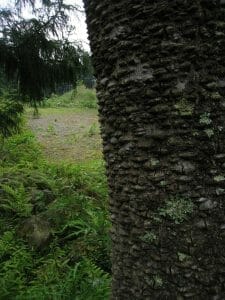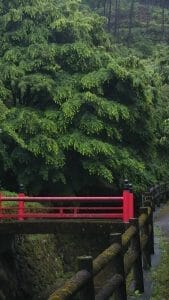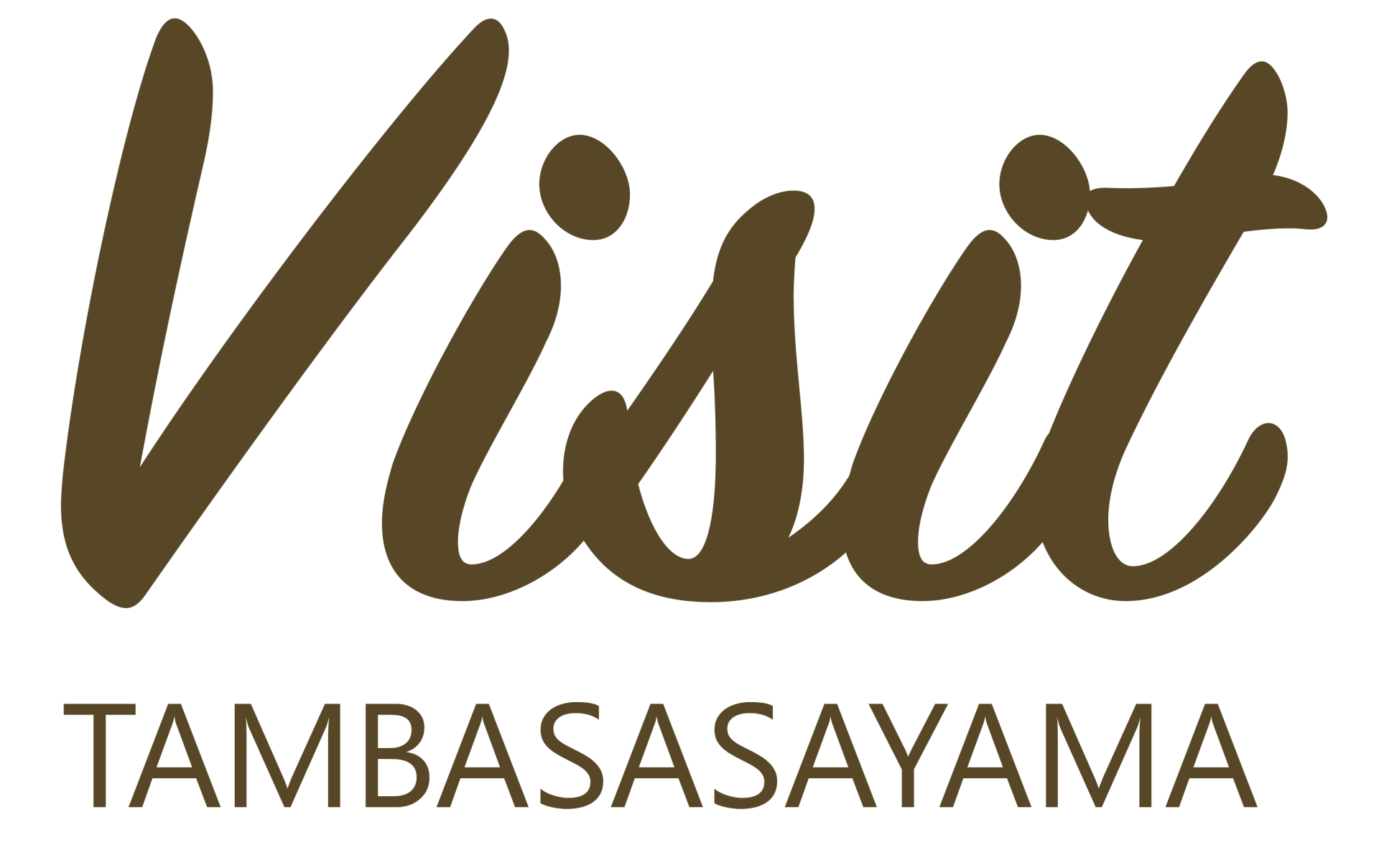Bunpoji Temple Complex

Location
The Bunpoji Temple Complex is located in the Ajimaoku village only about three kilometers from the Sasayamaguchi Train Station on the JR Takarazuka Line. It’s a nice walk on a good day, or you can take a short taxi ride (and maybe walk back, since it will be downhill).

Approach
The temple complex lies in a valley surrounded by rice paddies and fields of black soybeans, chestnuts, yams, and other local delicacies. So even if you take a taxi, have them let you out before a little ways below the complex grounds.
As you approach the complex, you’ll see a very large gateway called the Cherry Gateway. It’s a specified cultural property of the city. You can go through or around it and then stay right and go up the stone steps to see the Futamura Shrine.





Shrines
This Temple Complex is home to the Futamura Shine, which was first built in 1482. This shrine is the center of many village events, most notably the fall festival, when seven local villages gather at the shrine to pray and be blessed, celebrating and giving thanks for the fall harvest. Portable shrines are part of the festival and are carried up the stone steps that appear in one of the photos. The roofs are covered in copper and two buildings were recently recovered, so for the next 10 years or more you can see how the copper improves its patina with age. I never tire of seeing this shrine, which changes its appearance with the weather and time of day. As shown in the photos, you will also find any number of small shrines called Hokora around complex.
Caution: There are two Futamura Shrines in Tamba Sasayama which split long ago, so be sure you head for the one in the Bunpoji Temple Complex.




Temples
The Bunpoji Temple Complex is ancient, having first been established in 645. Then in 947, the entire complex was burned down in a revolt. It was rebuilt between 1312 and 1317 only to be burned down again between 1573 and 1592 during the wars to unify Japan as a nation. Later in the Edo Period, six temples were rebuilt, of which three remain today. Also, the “Main Temple” that lies a little ways up the mountain also remains today. At its peak in 1693, the complex was home to 21 different temples.
The photos do not show all three temples, one of which was rebuilt a few years ago. (Although new, the arched roof lets you know it’s a temple.) Each of the three temples has its own priest. The Main Temple up the mountain is open to the public only for special occasions, and the main Buddhist statue enshrined there is open for public viewing only once very 33 years. We were lucky enough to see it when our daughter dressed up in traditional clothing as part of the event when she was 3 years old.







Flowers
Temple Complexes are also good places to see flowers. The Bunpoji Templex Complex has many depending on the season, including cherry trees, a very old plum tree, hydrangeas, camellia, oriental paper bush (edgeworthia chrysantha—the yellow and white flowers in the photos), wisteria, and more.




Mountains
You don’t have to go very far into the mountains to find many interesting plants and flowers. The early morning or early evening always provide the best light.





Photo Opportunities
 I visit this temple on my morning walks or on the way up the mountains (the trail starts at the back of the temple complex) more than a hundred times a year. It’s always different and there are many opportunities to take good photos if you have an eye for form, color, and light. There’s always a good photo to be found, so good luck photo hunting.
I visit this temple on my morning walks or on the way up the mountains (the trail starts at the back of the temple complex) more than a hundred times a year. It’s always different and there are many opportunities to take good photos if you have an eye for form, color, and light. There’s always a good photo to be found, so good luck photo hunting.














